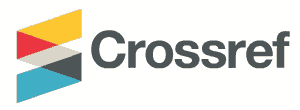Energy Management System using Evolutionary Mating Algorithms for Optimizing Energy Usage and User Comfort in Office Building
DOI:
https://doi.org/10.62146/ijecbe.v2i2.50Keywords:
energy conservation, user comfort, evolution mating algorithm (EMA), genetic algorithm, energy efficiencyAbstract
Indonesia has set a target to reduce emissions by 29% or 835 million tons of CO2 by 2030, which was increased to 32% or 912 million tons of CO2 in 2023. The building sector is one of the largest contributors to emissions in Indonesia. To reduce these emissions, the Indonesian government has issued energy conservation regulations requiring each sector to reduce energy consumption. According to Government Regulation No. 33 of 2023, energy conservation is mandatory for energy users in the building sector who use energy sources equivalent to or greater than 500 Tons of Oil Equivalent. One way to conserve energy is by implementing energy-efficient technologies, without compromising the comfort of building users, which includes thermal and visual comfort as part of indoor environmental quality (IEQ). An energy-efficient technology using the Evolution Mating Algorithm (EMA) is proposed. This study will discuss energy use without compromising building user comfort in tropical countries using the EMA optimization algorithm. The study demonstrates that EMA successfully optimizes energy use without reducing user comfort in tropical countries.
References
Kementerian Lingkungan Hidup dan Kehutanan, “NATIONALLY DETERMINED CONTRIBUTION (NDC) PERTAMA REPUBLIK INDONESIA,” Apr. 2022.
“Indonesia - Countries & Regions - IEA.” Accessed: Jan. 24, 2024. [Online]. Available: https://www.iea.org/countries/indonesia
Direktorat Jenderal EBTKE - Kementerian ESDM, “Indonesia Tetapkan E-NDC, Sektor Energi Miliki Target Tekan Emisi 358 juta CO2 di 2030,” 601.Pers/04/SJI/2023. Accessed: Jan. 24, 2024. [Online]. Available: https://ebtke.esdm.go.id/post/2023/12/07/3669/indonesia.tetapkan.e-ndc.sektor.energi.miliki.target.tekan.emisi.358.juta.co2.di.2030
Menteri Sekretaris Negara Republik Indonesia, “PERATURAN PEMERINTAH REPUBLIK INDONESIA,” in PP tentang Konservasi Energi, vol. 33, 2023.
J. Attema, S. Fowell, M. Macko, and W. Neilson, “The financial case for high performance buildings.” Oct. 01, 2018.
F. Liu, A. Chang-Richards, K. I. K. Wang, and K. N. Dirks, “Effects of indoor environment factors on productivity of university workplaces: A structural equation model,” Build Environ, vol. 233, Apr. 2023, doi: 10.1016/j.buildenv.2023.110098.
G. Zhenjing, S. Chupradit, K. Y. Ku, A. A. Nassani, and M. Haffar, “Impact of Employees’ Workplace Environment on Employees’ Performance: A Multi-Mediation Model,” Front Public Health, vol. 10, p. 890400, May 2022, doi: 10.3389/FPUBH.2022.890400/BIBTEX.
M. H. Sulaiman, Z. Mustaffa, M. M. Saari, H. Daniyal, and S. Mirjalili, “Evolutionary mating algorithm,” Neural Comput Appl, vol. 35, no. 1, pp. 487–516, Jan. 2023, doi: 10.1007/s00521-022-07761-w.
I. Ullah and D. Kim, “An improved optimization function for maximizing user comfort with minimum energy consumption in smart homes,” Energies (Basel), vol. 10, no. 11, Nov. 2017, doi: 10.3390/en10111818.
M. H. Sulaiman and Z. Mustaffa, “Using the evolutionary mating algorithm for optimizing the user comfort and energy consumption in smart building,” Journal of Building Engineering, vol. 76, Oct. 2023, doi: 10.1016/j.jobe.2023.107139.
Kementerian ESDM, “Kementerian ESDM RI - Media Center - Arsip Berita - Konsumsi Listrik Masyarakat Meningkat, Tahun 2023 Capai 1.285 kWh/Kapita,” 28.Pers/04/SJI/2024. Accessed: Jan. 31, 2024. [Online]. Available: https://www.esdm.go.id/id/media-center/arsip-berita/konsumsi-listrik-masyarakat-meningkat-tahun-2023-capai-1285-kwh-kapita
M. Santamouris and J. Feng, “Recent Progress in Daytime Radiative Cooling: Is It the Air Conditioner of the Future?,” Buildings 2018, Vol. 8, Page 168, vol. 8, no. 12, p. 168, Nov. 2018, doi: 10.3390/BUILDINGS8120168.
K. Okada et al., “Natural selection increases female fitness by reversing the exaggeration of a male sexually selected trait,” Nature Communications 2021 12:1, vol. 12, no. 1, pp. 1–10, Jun. 2021, doi: 10.1038/s41467-021-23804-7.
M. Pipattanasomporn et al., “CU-BEMS, smart building electricity consumption and indoor environmental sensor datasets,” Sci Data, vol. 7, no. 1, Dec. 2020, doi: 10.1038/s41597-020-00582-3.
S. P. Hubbell and L. K. Johnson, “Environmental Variance in Lifetime Mating Success, Mate Choice, and Sexual Selection,” https://doi.org/10.1086/284700, vol. 130, no. 1, pp. 91–112, 1987, doi: 10.1086/284700.
Menteri Ketenagakerjaan Republik Indonesia, “PERATURAN MENTERI KETENAGAKERJAAN Tahun 2018,” in Keselamatan dan Kesehatan Kerja Lingkungan Kerja, vol. 5, 2018.
Downloads
Published
How to Cite
Issue
Section
License
Copyright (c) 2024 International Journal of Electrical, Computer, and Biomedical Engineering

This work is licensed under a Creative Commons Attribution 4.0 International License.






